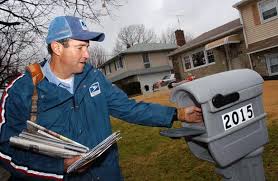 Mail fraud is defined as a scheme using mail to defraud another of money or property. It sounds simple, yet how the courts and enforcement agencies deal with mail fraud is anything but. First enacted in 1872, almost 100 years after the creation of the United States Postal Service (USPS), the mail fraud statute has continued to evolve over the years. It wasn’t until the 1970s that mail fraud statutes became what we know them to be today. One of the people chiefly responsible for modern mail fraud enforcement was Martin McGee, known professionally as “Mr. Mail Fraud.”
Mail fraud is defined as a scheme using mail to defraud another of money or property. It sounds simple, yet how the courts and enforcement agencies deal with mail fraud is anything but. First enacted in 1872, almost 100 years after the creation of the United States Postal Service (USPS), the mail fraud statute has continued to evolve over the years. It wasn’t until the 1970s that mail fraud statutes became what we know them to be today. One of the people chiefly responsible for modern mail fraud enforcement was Martin McGee, known professionally as “Mr. Mail Fraud.”
To understand how McGee became “Mr. Mail Fraud,” one must first look at how mail fraud enforcement worked prior to his time as Chief Inspector for the Chicago area USPS. Initially, the crime of mail fraud was defined rather narrowly. Early applications of the statute required proof of opening (or the intention to open) communication or correspondence with another person. This proved cumbersome and ineffectual for prosecuting mail-fraud criminals (3). In 1896 the U.S. Supreme Court ruled in Durland v. United States that mailing only needed to assist in the completion of a fraud to be prosecuted. In 1909 Congress eliminated this requirement and replaced with broader language so that any use of mail for the purpose of executing a scheme or artifice.
While Congress enacted mail fraud statutes with the initial reason of preserving the integrity of the USPS, the statutes have been applied to include modes of communication like facsimili and telex, and later on modem and Internet transmissions (3). Despite the continued broadening of mail fraud statutes by the courts and Congress, many enforcers still found the laws lacked teeth and were difficult to prosecute. It was these problems that Martin McGee addressed as the Chief Inspector of the USPS in Chicago in the 1970s.
McGee saw that there were two major problems with the investigation and later prosecution of mail fraud:
- There was a lack of investigative inquiry into many suspicious mailings.
- When mail fraud was discovered it was difficult to prosecute criminals under existing law.
The most direct way to fix these problems would have been to get more funding for investigation and lobby Congress to beef-up mail fraud statutes. However, since a Chief Inspector at the USPS has very little say in their funding and virtually no clout in Congress, McGee had to look elsewhere for solutions. McGee started to focus on hiring eager young investigators and came up with ways to use obscure parts of the current mail fraud statutes in innovative ways.
This new approach to going after mail fraud was extremely successful and changed the way modern fraud and personal information violations are prosecuted. The fraud investigations overseen by McGee dealt mostly with corrupt banks and credit card companies, but his work laid the foundation for the successful prosecution of white-collar criminals such as former Illinois Gov. Otto Kerner and floor leader of the Chicago City Council, Thomas Keane. McGee’s methodology earned him the name “Mr. Mail Fraud,” and he is regarded as one of the most influential figures in how mail fraud statutes are applied today.

